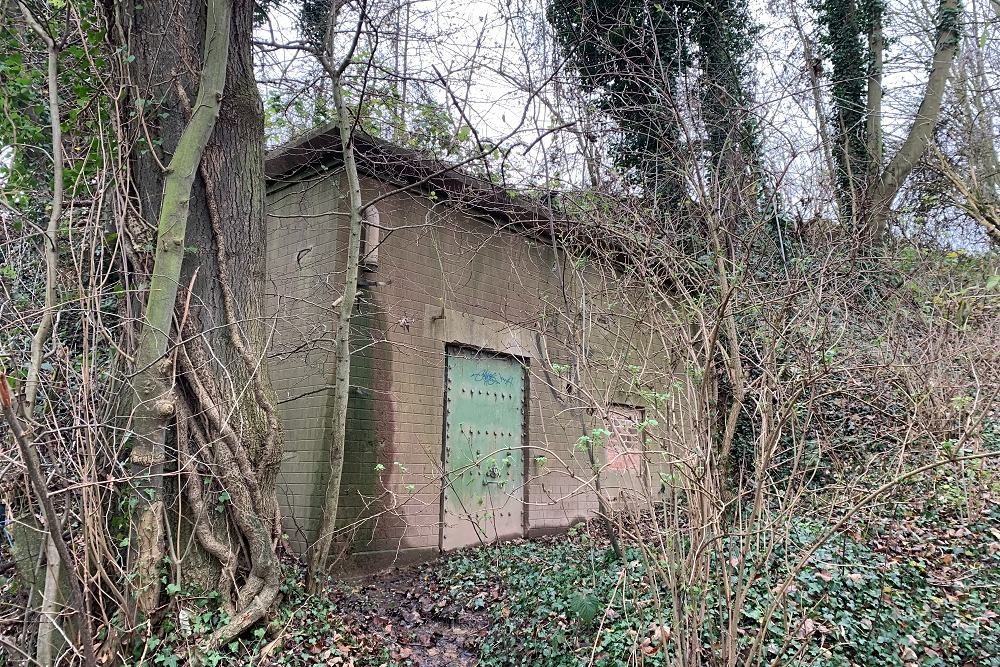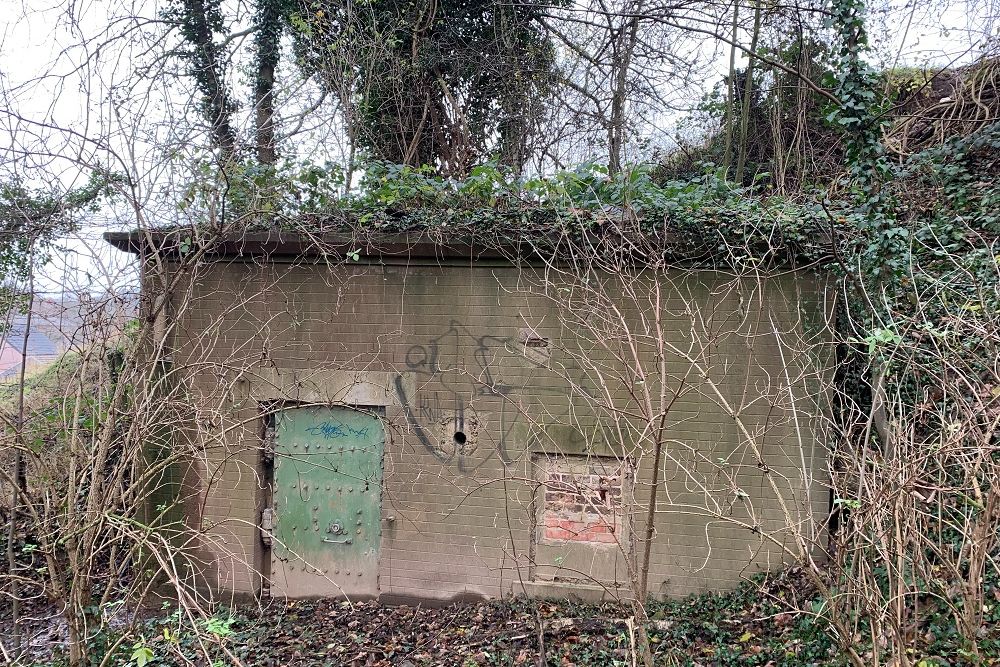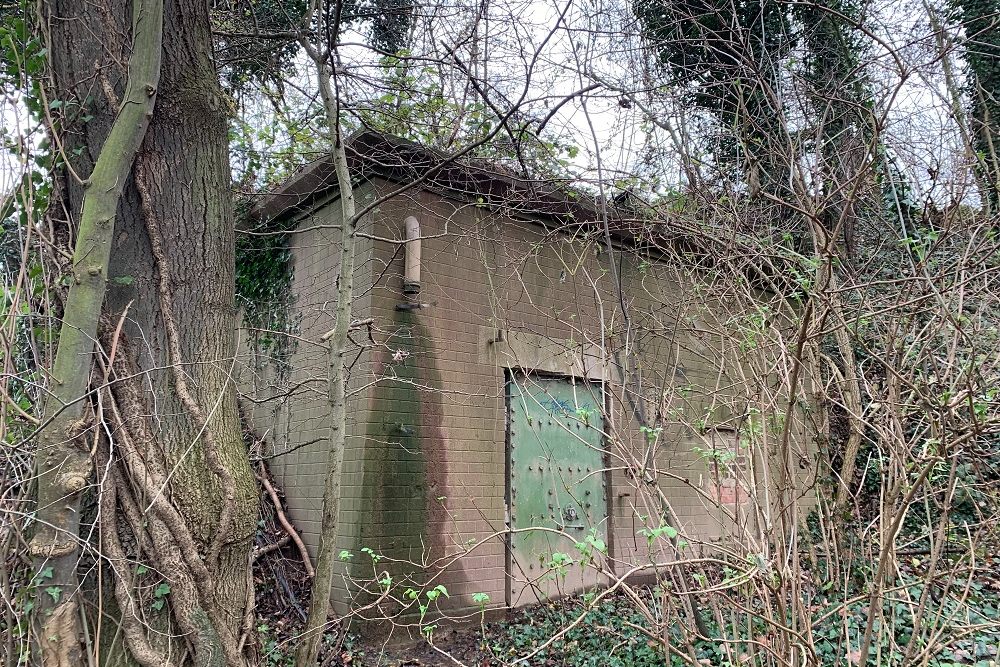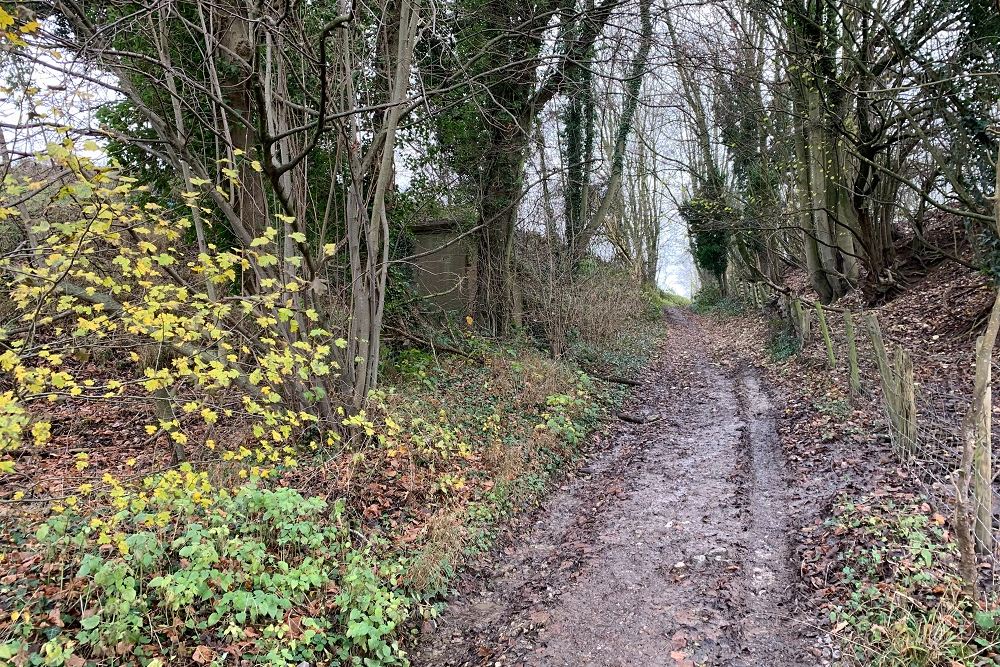Bunker CTF 39 Heure-le-Romain
This is bunker CTF 39.
The bunker is part of the second line of defense for the city of Liège, la Position Fortifiée de Liège 2, PFL 2.
CTF stands for 'Centraux téléphoniques' which can be translated as a bunker for telephone exchange. The bunker was not intended as a bunker in de line of defense or shelter. Within the PFL area there were 34 CTF-bunkers. They provided communication between the forts, bunkers.and secret underground telephonebooths T. and C5.
From these allmost 200 secret underground telephonebooths the soldiers were able to contact a CTF by plugging in a field telephone. In this way they were able to comunicate with the forts and give vital information about troopmovements ore firepositions to the officers in command of the artillery.
typical for this kind of bunkers is that they do not have gunopenings. On first sight one might think dat the opening next to the door was for a cannon or machinegun. But this is an escape hatch. The bunker is camouflaged in the typical redbrick patern so it would fit in with the houses in the area. The patern was carved in the cement.
The bunker is located at a bushtrail.
Telephone lines were burried as deep as 2 meters in between bunkers and the forts. Outside the forts the lines were burried even as deep as 6 meters. Out of precaution for the expected shelling of the forts with heavy artillary. At this depht the lines would be less vurnerable for the shells.
The walls and ceiling of the bunkers from the PFL were standard 1.30 m. thick and of reinforced concrete. They had to be able to withstand shells of 150 mm. To illustrate, the caliber of shells a Königstiger could fire was caliber 88 mm. Thus, only heavier caliber field guns could penetrate the concrete and potentially destroy the bunker.
The bunkers were built in the 1930s.
After the war, when the bunkers lost their strategic value for the Belgian army, the plots of land on which they stood were sold. All the metal of the hatches and doors was sold as scrap metal. Hence the that most bunkers are now on private plots.
Do you have more information about this location? Inform us!
Source
- Text: Ed Lewandowski
- Photos: Ed Lewandowski
- La Position Fortifiée de Liège, Coenen & Vernier
Nearby
Museum
Point of interest
- Memorial Cemetry Houtain-Saint-Siméon - Houtain-Saint-Siméon
- Memorial Church Houtain-Saint-Siméon - Houtain-Saint-Siméon
- Memorial O.R.D. - Visé
Monument
- War Memorial Houtain-Saint-Siméon - Houtain-Saint-Siméon
- Memorial Fallen RAF Crew Members - Hermée
- Resistance Memorial Hallembaye - Hallembaye
Cemetery
- Belgian war graves 1st en 2nd world war - Houtain-Saint-Simeon
- Belgian War Graves Milmort (Herstal) - Milmort
- Belgian War Graves Lixhe - Lixhe (Visé)
Remembrance Stone
- Stumbling Stone Steegstraat - Eijsden
- Stumbling Stones Diepstraat 55 - Eijsden (Margraten)
- Stumbling Stone Kapelkesstraat 14 - Eijsden








